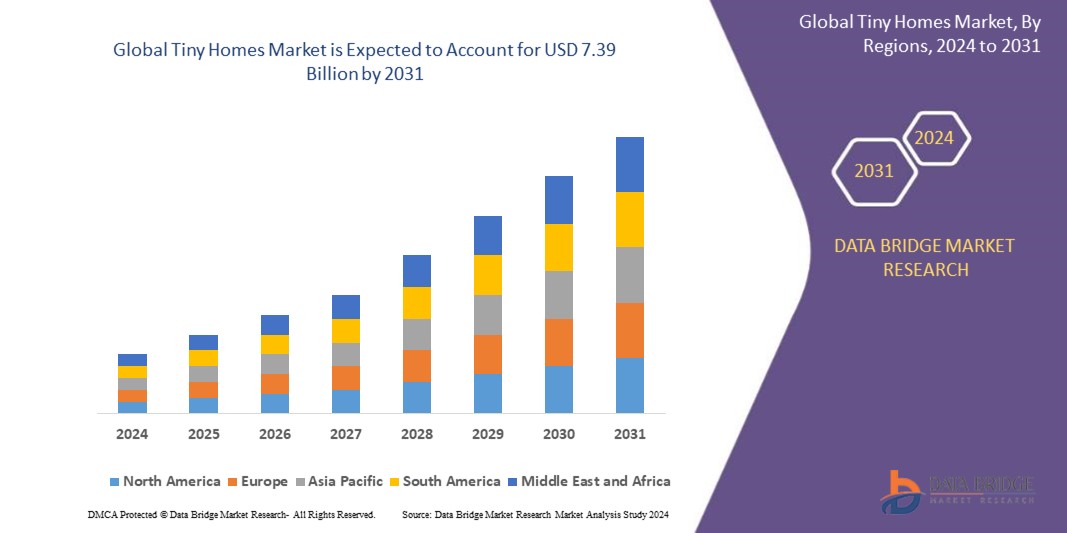Introduction
The Tiny Homes market is redefining the concept of modern living by offering compact, affordable, and sustainable housing solutions. As urbanization increases and property prices soar, many people are choosing to downsize and embrace minimalist lifestyles. Tiny homes, typically ranging from 100 to 400 square feet, offer an efficient use of space without compromising comfort. This growing trend is attracting individuals seeking to reduce their environmental footprint, live debt-free, or enjoy a more flexible and mobile lifestyle. In this article, we explore the evolution of the tiny homes market, current trends, growth factors, and provide a detailed analysis of market size and country-level dynamics.
The Evolution of Tiny Homes
The origins of the tiny home movement can be traced back to the early 20th century, when compact, mobile dwellings such as caravans and trailers gained popularity. However, the modern tiny home movement emerged in the 1990s as a response to rising housing costs, the pursuit of sustainability, and a desire for simpler living. Architect Sarah Susanka’s book, The Not So Big House (1998), played a pivotal role in promoting smaller, more efficient homes as a means to focus on quality rather than quantity.
The movement gained further momentum after the 2008 financial crisis, when many people were looking for affordable alternatives to traditional housing. Tiny homes, often built on trailers to bypass zoning regulations, became a popular solution for those seeking financial freedom and flexibility. In recent years, the tiny home movement has expanded beyond the U.S. to various parts of the world, fueled by changing lifestyles, environmental concerns, and advancements in design and construction.
Today, tiny homes are viewed as a viable option for addressing housing shortages, reducing carbon footprints, and enabling a more mobile lifestyle. While initially embraced by individuals and couples, the market now caters to a broader demographic, including families, retirees, and digital nomads.
Market Trends and Factors Driving Growth
The tiny homes market is characterized by several key trends. One of the most prominent is the growing demand for sustainable living. Tiny homes are often built using eco-friendly materials, require less energy to heat and cool, and generate less waste compared to traditional homes. Many tiny homes incorporate renewable energy systems, such as solar panels, and water-saving features like composting toilets and rainwater harvesting systems. This focus on sustainability appeals to environmentally conscious consumers who want to reduce their ecological footprint.
Another trend driving the market is the affordability of tiny homes. With rising property prices in urban areas, many people are priced out of the housing market. Tiny homes offer a cost-effective alternative, allowing individuals to own a home without taking on significant debt. The lower cost of construction, maintenance, and utilities makes tiny homes an attractive option for first-time buyers, retirees looking to downsize, and those seeking financial independence.
Minimalist living has also gained traction as a lifestyle choice, with people choosing to declutter their lives and prioritize experiences over material possessions. Tiny homes offer a simplified way of living that aligns with this philosophy, focusing on functionality, multi-purpose spaces, and minimalism. This shift in mindset is particularly appealing to younger generations, who are more likely to value mobility and experiences over long-term homeownership.
The rise of remote work and the digital nomad lifestyle is another factor contributing to the growth of the tiny homes market. As more people work remotely, the need to live near office locations has diminished. This has led to an increase in demand for mobile tiny homes, which allow individuals to travel while maintaining a permanent residence. Many tiny homes are designed to be off-grid, providing the flexibility to live and work from virtually anywhere.
Additionally, government initiatives aimed at addressing affordable housing shortages are supporting the growth of the tiny homes market. In several countries, local authorities have begun to recognize tiny homes as a solution to homelessness and housing shortages. Some regions have relaxed zoning laws and building codes to accommodate the rise of tiny homes, allowing for greater flexibility in their placement and construction.
Market Scope and Market Size
The tiny homes market includes a wide range of structures, from custom-built tiny houses on wheels (THOWs) to prefabricated modular homes. The market also includes related products and services such as design consultations, interior furnishings, and energy-efficient appliances specifically tailored for compact living.
The global tiny homes market was valued at approximately USD 10 billion in 2023 and is expected to grow at a compound annual growth rate (CAGR) of around 7% between 2023 and 2030. This growth is driven by increasing interest in affordable and sustainable housing solutions, rising urbanization, and shifting consumer preferences toward minimalism and mobility.
The residential sector remains the largest market segment, with many buyers opting for tiny homes as permanent or vacation residences. The commercial sector, particularly in tourism and hospitality, is also seeing growth, with tiny homes being used as rental units in eco-resorts, glamping sites, and boutique hotels.
By design type, tiny homes on wheels (THOWs) represent a significant portion of the market, offering mobility and flexibility. These homes are typically built on trailers and can be moved to different locations, making them popular among travelers and those who value flexibility in where they live. Modular and prefabricated tiny homes, which are built off-site and assembled on location, are also gaining popularity due to their faster construction times and lower costs.
The tiny homes market is further segmented by end-use into personal use, rental use, and community housing. The personal use segment is the largest, as more individuals seek tiny homes for permanent residences or vacation homes. The rental use segment is growing, particularly in the tourism industry, where tiny homes are being used as unique and eco-friendly accommodations.
Country-Level Analysis
The tiny homes market is experiencing growth in various regions across the globe, with North America, Europe, and Asia-Pacific being the key markets.
North America is the largest market for tiny homes, driven by the high cost of housing in urban areas, particularly in the United States and Canada. In the U.S., states like California, Oregon, and Colorado have seen significant interest in tiny homes, both as a lifestyle choice and a solution to the affordable housing crisis. The trend toward sustainable living and minimalist lifestyles is particularly strong in North America, where many tiny home builders are incorporating eco-friendly materials and energy-efficient technologies into their designs.
Europe is another key region, where tiny homes are being embraced as a solution to housing shortages and rising property prices. Countries like the Netherlands, Germany, and the UK have seen growing interest in tiny homes, particularly in urban areas where space is limited. In some European cities, local governments have begun to relax zoning regulations to allow for the construction of tiny homes, particularly in response to the need for affordable housing solutions.
In the Asia-Pacific region, tiny homes are gaining popularity in countries like Japan, Australia, and New Zealand. Japan, known for its efficient use of space, has seen a rise in interest in tiny homes as a response to urbanization and high property prices. Australia and New Zealand have also embraced tiny homes, particularly in rural areas where people are looking for affordable and sustainable housing options. The tiny home movement in Asia-Pacific is supported by a growing awareness of environmental sustainability and a desire for a more simplified way of living.
Latin America and Africa are emerging markets for tiny homes, where the concept is still relatively new but gaining traction. In Latin America, countries like Brazil and Mexico are beginning to explore tiny homes as a solution to housing shortages and urbanization challenges. In Africa, the tiny home movement is being considered as a potential solution to affordable housing shortages in growing urban centers.
Conclusion
The tiny homes market is experiencing significant growth, driven by rising property prices, the shift toward sustainable and minimalist living, and the increasing popularity of remote work and mobile lifestyles. With a focus on affordability, flexibility, and environmental sustainability, tiny homes offer an attractive housing alternative for a diverse range of consumers. As more countries relax zoning laws and recognize the potential of tiny homes to address housing shortages, the market is expected to expand further in the coming years. North America, Europe, and Asia-Pacific remain the key regions for market growth, while emerging markets in Latin America and Africa present new opportunities for the future.
Get More Detail: https://www.databridgemarketresearch.com/reports/global-tiny-homes-market




